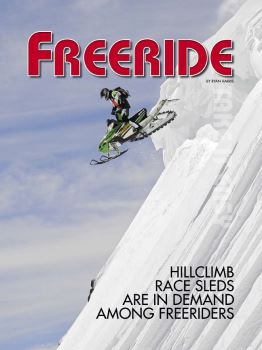 Twenty-ten is a unique year for many reasons, but one of our favorite reasons is that Polaris, Ski-Doo and Arctic Cat are each offering consumers the opportunity to own and ride factory race equipment without riding out of the team semi.
Twenty-ten is a unique year for many reasons, but one of our favorite reasons is that Polaris, Ski-Doo and Arctic Cat are each offering consumers the opportunity to own and ride factory race equipment without riding out of the team semi.
We're talking about the 2010 hillclimb editions of these manufacturers' mountain sleds. Polaris originally released a limited number of the Assault RMK as a consumer sled in 2009, disguising its ISR-compliant competition hillclimber right on its brochure pages. Arctic Cat released its HCR (Hill Climb Racer) later in the year primarily as a competition sled, but there were a few consumers who got their hands on the racer. Ski-Doo's Summit Hillclimb Edition was the hardest '09 mountain racer for consumers to get their hands on without actually racing.
But for 2010, these three OEMs offered their hillclimb race sleds to the public (although all are limited production runs and the Summit XR-S had to be ordered in the spring).
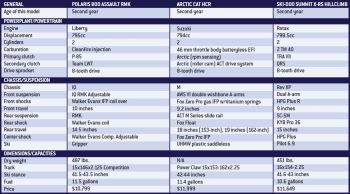 What caused the change from late-release racer-only programs to full-on consumer offerings? First, to meet ISR regulations for professional hillclimbing, 500 units have to be produced. It's easier to get rid of 500 snocross race sleds over dozens of circuits across the continent, but there aren't as many racers chasing pro hillclimbing circuits. So the units have to go somewhere. Second, the way these sleds are set up,
What caused the change from late-release racer-only programs to full-on consumer offerings? First, to meet ISR regulations for professional hillclimbing, 500 units have to be produced. It's easier to get rid of 500 snocross race sleds over dozens of circuits across the continent, but there aren't as many racers chasing pro hillclimbing circuits. So the units have to go somewhere. Second, the way these sleds are set up, 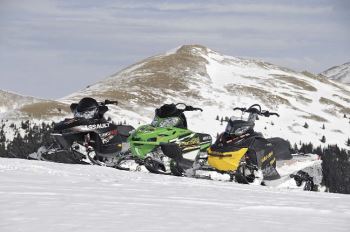 with high-performance suspensions, chassis reinforcements and stiffer durometer tracks, these machines are a perfect fit for the aggressive backcountry freerider (the guys who'd rather go off a cliff than around it). There's actually a demand for these machines apart from competition.
with high-performance suspensions, chassis reinforcements and stiffer durometer tracks, these machines are a perfect fit for the aggressive backcountry freerider (the guys who'd rather go off a cliff than around it). There's actually a demand for these machines apart from competition.
So what are the questions surrounding the 2010 group of freeride/competition sleds? We've narrowed them down for you.
What makes a hillclimb racer special compared to the premium versions of the same mountain sleds?
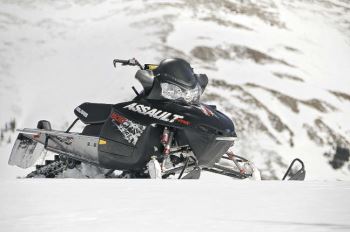 Traction, suspension, stability and durability. Mountain sleds are designed to float through powder, carve sidehills easily and be as light as possible. Hillclimb editions are designed to grab at rocks, logs and packed snow, rail up a rutted, trashed line at wide-open throttle, absorb holes, jumps and stumps at race speed and survive to do it all again the next weekend. Typically, they are slightly heavier than mountain sleds.
Traction, suspension, stability and durability. Mountain sleds are designed to float through powder, carve sidehills easily and be as light as possible. Hillclimb editions are designed to grab at rocks, logs and packed snow, rail up a rutted, trashed line at wide-open throttle, absorb holes, jumps and stumps at race speed and survive to do it all again the next weekend. Typically, they are slightly heavier than mountain sleds.
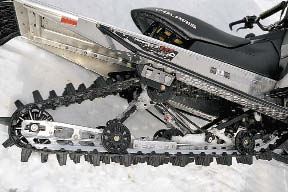 For example, the Polaris Assault has coil-over Walker Evans racing shocks where the 800 Dragon RMK uses lightweight springless Walker Evans air shocks. It also has rail braces in the rear suspension with heavy-duty suspension pads, a wider ski-stance (41-43.5 inches compared to the 800 Dragon RMK's 39-41 inches) and a more aggressive track.
For example, the Polaris Assault has coil-over Walker Evans racing shocks where the 800 Dragon RMK uses lightweight springless Walker Evans air shocks. It also has rail braces in the rear suspension with heavy-duty suspension pads, a wider ski-stance (41-43.5 inches compared to the 800 Dragon RMK's 39-41 inches) and a more aggressive track.
The Arctic Cat HCR also uses coil-over Fox Zero Pro 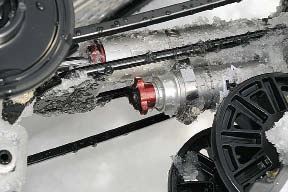 front shocks while the M8 Sno Pro features lighter Fox Float air shocks. The HCR's ski stance is wider (42-44 inches compared to the M8's 39-41).
front shocks while the M8 Sno Pro features lighter Fox Float air shocks. The HCR's ski stance is wider (42-44 inches compared to the M8's 39-41).
Ski-Doo's Summit X-RS Hillclimb Edition also has a wider ski stance than its brethren (41.6-43 compared to the Summit's 38.4-40.1), rail reinforcements in the rear suspension, a fourth idler wheel and other suspension upgrades.
What are the weight differences between competition and mountain versions?
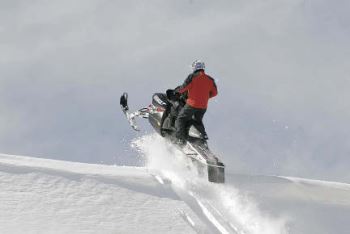 Ski-Doo and Polaris had published their official weights as of press time-Arctic Cat waits until the its machines are in production to release any figures. Ski-Doo's Summit X-RS with 154-inch track weighs 5 lbs. more than a Summit X 154 (451 lbs. vs. 446 lbs.). Polaris' Assault weighs 15 lbs. more than an 800 Dragon RMK 155 (487 lbs. vs. 472 lbs.). The Assault's competition track carries a lot more meat than the Dragon's Series 5.1 single-layer track.
Ski-Doo and Polaris had published their official weights as of press time-Arctic Cat waits until the its machines are in production to release any figures. Ski-Doo's Summit X-RS with 154-inch track weighs 5 lbs. more than a Summit X 154 (451 lbs. vs. 446 lbs.). Polaris' Assault weighs 15 lbs. more than an 800 Dragon RMK 155 (487 lbs. vs. 472 lbs.). The Assault's competition track carries a lot more meat than the Dragon's Series 5.1 single-layer track.
What are the track differences?
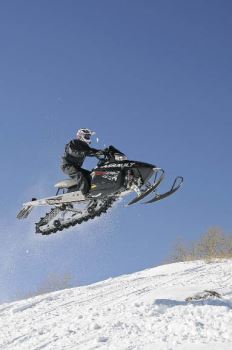 The Assault's track is the most aggressive and the greatest departure from its mountain counterpart. Its 15x146x2.125 track is not a stiffer version of the RMK track. It is a dedicated competition track, right down to the pre-drilled ice screw holes and the angled tips of the wide, thick lugs. The Assault's track is reversed for competition, so that the ice screws bite and stand vertical as the lug flexes, rather than begin to lay over under stress. In racing, weight doesn't matter. So the Assault's track is all about traction in the worst elements.
The Assault's track is the most aggressive and the greatest departure from its mountain counterpart. Its 15x146x2.125 track is not a stiffer version of the RMK track. It is a dedicated competition track, right down to the pre-drilled ice screw holes and the angled tips of the wide, thick lugs. The Assault's track is reversed for competition, so that the ice screws bite and stand vertical as the lug flexes, rather than begin to lay over under stress. In racing, weight doesn't matter. So the Assault's track is all about traction in the worst elements.
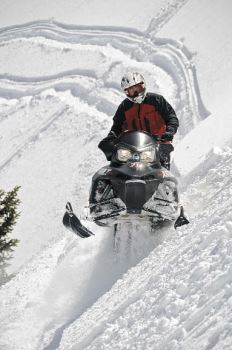 The HCR's 15x153x2.25 track is a 90-durometer version of the Power Claw track. An M8's track is an 80-durometer Power Claw.
The HCR's 15x153x2.25 track is a 90-durometer version of the Power Claw track. An M8's track is an 80-durometer Power Claw.
The Summit X-RS runs the 16x154x2.25 PowderMax track, which is also found on Summit X models.
Which is the best track?
For competition-style snow, the Assault has the best track. However, for freeriding, the SnoWest test staff prefers the HCR's Power Claw for its versatility in all snow conditions. The X-RS's track is well-rounded for all conditions.
What is different between mountain and hillclimber suspension packages?
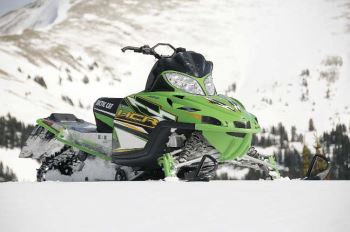 That's like asking the difference between the suspensions on a motocross bike and a trail bike. One is set up for powder riding, the other for rock-hard moguls.
That's like asking the difference between the suspensions on a motocross bike and a trail bike. One is set up for powder riding, the other for rock-hard moguls.
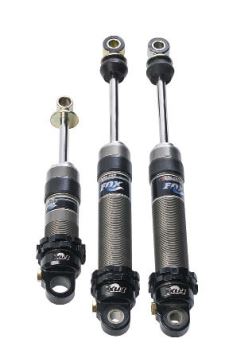 The Ski-Doo X-RS features KYB HPG Plus R front shocks, its premium rebuildable, externally adjustable gas shock and a KYB Pro 36 rear shock. It is a phenomenal shock package. Summit X models feature KYB HPG Plus front and rear shocks. The difference is in the internal valving and external adjustments and shaft size on the rear shock.
The Ski-Doo X-RS features KYB HPG Plus R front shocks, its premium rebuildable, externally adjustable gas shock and a KYB Pro 36 rear shock. It is a phenomenal shock package. Summit X models feature KYB HPG Plus front and rear shocks. The difference is in the internal valving and external adjustments and shaft size on the rear shock.
Arctic's HCR uses the same rear Fox Float shock and Zero Pro center shock as the M8 Sno Pro, but its front Fox Zero Pro gas shocks with titanium springs are more about the rough stuff than the M8 Sno Pro's Fox Floats.
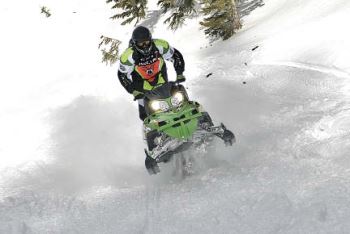 Polaris switched to coil-over Walker Evans IFP gas shocks for the front of the Assault for 2010 and runs a Walker Evans coil center shock and Walker Evans Compression Adjustable rear track shock. It is also an outstanding shock package for pro-level freeriders.
Polaris switched to coil-over Walker Evans IFP gas shocks for the front of the Assault for 2010 and runs a Walker Evans coil center shock and Walker Evans Compression Adjustable rear track shock. It is also an outstanding shock package for pro-level freeriders.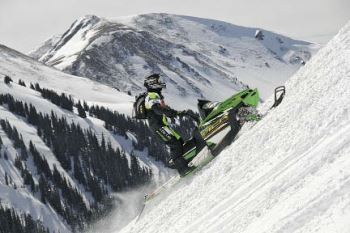
How did we rate the suspensions?
This test was based on rough terrain, where the aggressive shock packages and valving rates come into play. In deep snow, those features are negated. until you spot the landing on a 30-foot drop. We covered 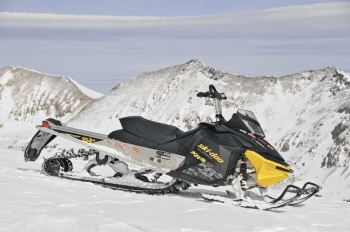 more than enough miles of everything from rough, three-foot moguls to shallow stutter bumps, rutted out lines that ascended up drainage bottoms to shelled-out hillsides. The decision was fairly unanimous across the board. The SnoWest test staff chose the X-RS suspension package over the Assault and HCR, but the Assault was a close second.
more than enough miles of everything from rough, three-foot moguls to shallow stutter bumps, rutted out lines that ascended up drainage bottoms to shelled-out hillsides. The decision was fairly unanimous across the board. The SnoWest test staff chose the X-RS suspension package over the Assault and HCR, but the Assault was a close second.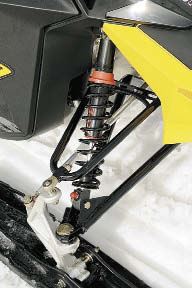
What about the power?
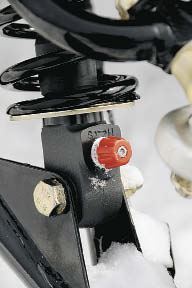 It mirrors our test report on the 800-class mountain sleds in the October, 2009 SnoWest. There are no differences to the power plants of these three sleds compared to their mountain versions. That said, under backcountry freeriding conditions, the SnoWest staff put the Arctic Cat HCR on top of the heap for power output and delivery, with the Summit X-RS second and the Assault third. Whatever Arctic Cat did to the 800 engine for 2010 worked (and you can find all of that technical info in our September issue).
It mirrors our test report on the 800-class mountain sleds in the October, 2009 SnoWest. There are no differences to the power plants of these three sleds compared to their mountain versions. That said, under backcountry freeriding conditions, the SnoWest staff put the Arctic Cat HCR on top of the heap for power output and delivery, with the Summit X-RS second and the Assault third. Whatever Arctic Cat did to the 800 engine for 2010 worked (and you can find all of that technical info in our September issue).
What did we like about each hillclimber?
Assault:
- Skis. They're the best of any brand.
- Rideability or how well it responds to rider input. We could also say it's very predictable.
- Power delivery. It may not be the most powerful, but numbers on paper do not always equate to the best power delivery on the snow.
- Suspension. This sled lives for huge moguls and big jumps. It handles the small stuff exceptionally well, too.
HCR:
- Power. In one year, the 800 Cat went from the school wimp to the beach bully. This engine rocks.
- Track. The Power Claw works everywhere, from hardpack to sugar powder. The 90 duro version just does that much better in the hardpack.
- Handling. Aside from stutter bumps and rough trails, it's easier to meld mind with machine on the HCR than the other two. You can anticipate its moves and control its action. It is a roll-and-go chassis, meaning that you change direction by leaning, not steering. We love it.
- Seat. What can we say, other than we're glad the old M-Series seat is history.
X-RS:
- Power. If you needed a burst of power to get through a bad section on the course, this sled has it.
- Suspension. When we left the hills and faced a long section of single track moguls, everyone wanted the X-RS.
- Seat. The taller, narrower seat is a perfect fit for the Rev XP chassis.
What did we hate about each hillclimber?
Assault:
- The Pro Taper handlebars are too wide. Most of the SnoWest test staff prefer the bend and width of the base RMK handlebars, but like the height of the Pro Tapers.
- The RMK-style running boards allow more snow buildup than the other two brands.
- Not enough traction on the running boards for aggressive foot movement.
- Track-it's great for dedicated competition, but overly aggressive for most backcountry riders. You can put the Assault most places an RMK will go, but it requires better control at the throttle thumb than most riders have.
HCR:
- Rough snow suspension. Stutter bumps are not the HCR's forte.
- Turning radius. It takes a lot more acreage to flip a Uey on the HCR if you leave both skis on the ground (which we usually don't).
- The sidehill strap is a little too low and hard to grasp quickly for those who use it.
X-RS:
While the test staff was in agreement on the other two sleds' faults, each test rider had his own complaints about the X-RS.
- Throttle pull is very hard compared to the other two fuel-injected sleds. We love the power of a carbureted engine, but this is the downside.
- The chassis has an unforgiving feel. That is, when you make a mistake or can't hold your line, it is more difficult to correct or switch to Plan B on the X-RS. Most riders on our test staff found themselves turning out where they would have corrected and maintained the line on the other two sleds.
What else did we rate on the hillclimbers?
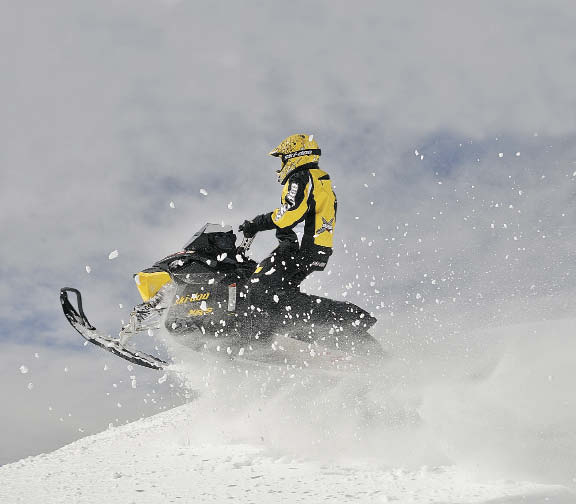 We looked at everything on these three sleds over the course of our riding time on them. The SnoWest test staff unanimously picked the Assault's skis over the HCR's (second) and X-RS's (third). We liked the HCR's handlebar package best, with the X-RS's second and the Assault's third. For power, everyone chose the HCR first, and the remaining votes went to the X-RS (second) and Assault (third).
We looked at everything on these three sleds over the course of our riding time on them. The SnoWest test staff unanimously picked the Assault's skis over the HCR's (second) and X-RS's (third). We liked the HCR's handlebar package best, with the X-RS's second and the Assault's third. For power, everyone chose the HCR first, and the remaining votes went to the X-RS (second) and Assault (third).
Sidehilling? We'll take the HCR first, the Assault second and the X-RS third. We liked the HCR's running boards best, the Assault's worst and the X-RS's in the middle. We were not so unanimous on the seats. Polaris had the most first-place votes, but only by one. The HCR and X-RS each had votes for best seat. That shows that all three sleds have excellent seats. The HCR was consistently easiest to start while the X-RS consistently took the most pulls to start, warm or cold. The Assault fired almost as easily as the HCR.
What's the bottom line?
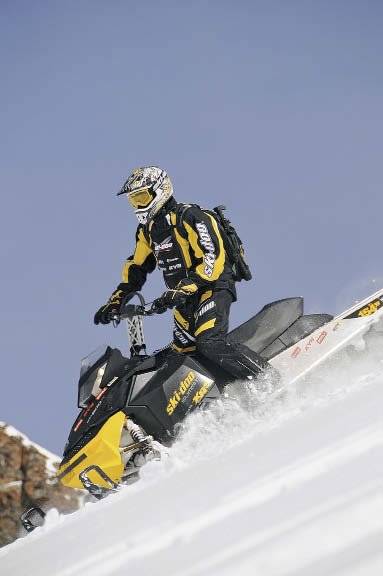 While it didn't always score well in some categories (suspension and stutter bumps), the SnoWest staff felt that the HCR was the most well-rounded sled for a freerider to hop on and go party in the backcountry. It may punish you on any trails you encounter, but it will pay dividends everywhere else. The new 800 H.O. engine, new seat with last year's refined chassis and the amazing Power Claw track make this a lethal combination for any rider looking for a good time.
While it didn't always score well in some categories (suspension and stutter bumps), the SnoWest staff felt that the HCR was the most well-rounded sled for a freerider to hop on and go party in the backcountry. It may punish you on any trails you encounter, but it will pay dividends everywhere else. The new 800 H.O. engine, new seat with last year's refined chassis and the amazing Power Claw track make this a lethal combination for any rider looking for a good time.
Each SnoWest test rider felt most comfortable on the HCR in all conditions but rough terrain. And on rough terrain, it was the worst of the three by a mile. The X-RS is a blast on anything 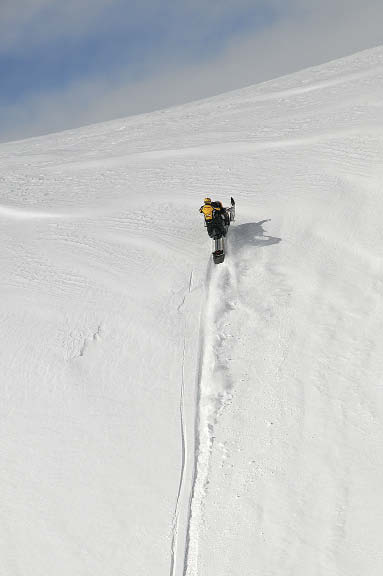 that has to do with getting air, but the test riders felt less comfortable on it in technical spots than on the other two. The Assault is an all-around package that is only lacking in horsepower compared to the other two. Its suspension turns places you used to dread into the most fun sections of the ride.
that has to do with getting air, but the test riders felt less comfortable on it in technical spots than on the other two. The Assault is an all-around package that is only lacking in horsepower compared to the other two. Its suspension turns places you used to dread into the most fun sections of the ride.
If you are currently riding a mountain sled and find yourself spending the majority of your ride airborne or are constantly blowing through the suspension stroke, you might want to take a closer look at one of these racing machines.
Now you know what separates freeriders from the rest of the bunch.